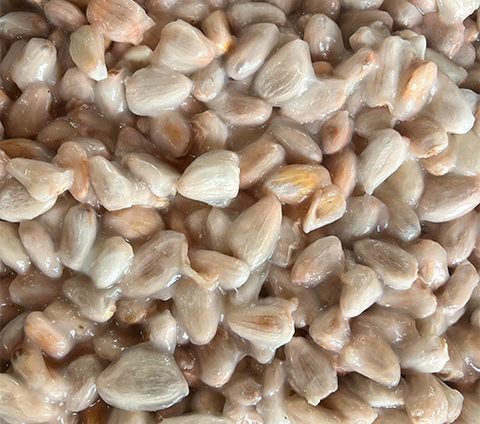The Ultimate Guide to Cacao Fermentation
The Ultimate Guide to Cacao Fermentation
In many regions of the world, cacao is considered to be a sacred superfood, known for its macrobiotic benefits and nutrient density. Most people don’t realize that fermentation is an integral step in turning raw cacao into the chocolate that we all know and enjoy.
In fact, cacao fermentation is one of the most complex processes in the world of prebiotic, cultured foods. The cacao bean pulps experience both anaerobic and aerobic fermentation, which after cacao roasting, creates a rich, indulgent chocolate flavor.
In this article, we will discuss the cacao fermentation process, as well as its influence on the overall flavor and acidity of chocolate.

The Role of Microorganisms in Fermentation
While cacao alone is not a fermented food, the cacao pulp does undergo fermentation through a microbial process. Yeasts, bacteria, and enzymes ferment the juicy white pulp, or baba, that surrounds the cacao beans.
These microorganisms play a crucial role in breaking down the sugars and acids in the pulp, which leads to the development of flavor and acidity in the cacao beans. The specific microorganisms involved in fermentation can vary depending on the region, the type of cacao, and the fermentation method used.

Cacao’s Anaerobic and Aerobic Fermentation Phases
Fermentation methods vary depending on regional preferences and the availability of resources. Generally speaking, all cacao fermentation follows a similar process, including an anaerobic phase and an aerobic phase.
The anaerobic phase is characterized by the absence of oxygen and is dominated by yeast, lactic acid-producing bacteria, and pulp enzymes. The aerobic phase is characterized by the presence of oxygen and is dominated by acetic acid-producing bacteria.
The Basics of Fermentation Vessels and Duration
The traditional fermentation methods used by farmers include the use of a variety of vessels, such as wooden boxes, baskets, and concrete tanks. The size and type of vessel used can affect the fermentation process, as well as the duration of fermentation. The duration of fermentation can vary depending on the region, but typically it will range from a few days to a week or more.

The Role of Turning and Preconditioning
In traditional fermentation methods, turning the cacao beans and preconditioning the pods before fermentation are important steps. Turning the cacao beans allows for more uniform fermentation and helps to incorporate oxygen into the process. Preconditioning the pods, which is the process of storing the pods before fermentation, can also affect the outcome of the fermentation process.
Preconditioning allows the pods to reach optimal ripeness for fermentation and can also help to control the temperature and humidity during fermentation. These steps, along with other traditional techniques, are crucial in achieving the desired flavor and acidity in the final product.
The Overall Impact of Fermentation on Flavor and Quality
Fermentation is paramount to the chocolate-making process, creating the complex and nuanced flavors that are found in high-quality chocolate. The specific aromas and flavor profiles created during fermentation will change depending on the area, the type of cacao, and the fermentation method used. The acidity of the beans will also be influenced by the fermentation process. However, a well-fermented cacao will have balanced acidity that complements the flavors!


